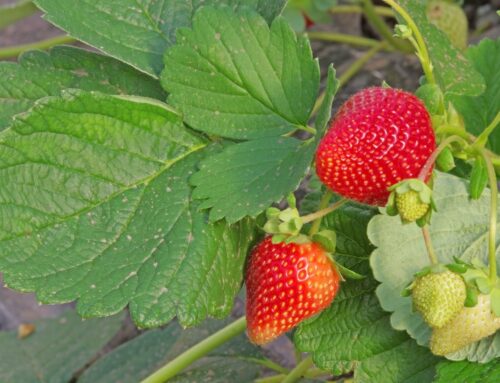If you love avocados, try giving these “hardy” avocados a try! They may take a little extra work to grow in Texas, but the rewards are worth it! Please note that the winter hardiness stated is for trees established for 3 years or more. Trees will need protection in the first few years.
‘Joey’ has a small, egg-shaped fruit, with a dark purple skin and flavorful, nutty flesh. It ripens from August to October, and is cold hardy to 15 degrees F (for a short period of time). (Zone 8b) It is a “Type B” pollinator.
‘Lila’ has a medium sized green fruit, a rich nutty flavor and ripens from July to September. It is cold hard to 15 degrees F. (Zone 8b) It is a “Type A” pollinator.
‘Mexicola Grande’ produces a black skinned avocado that ripens in late summer and fall. The fruit has a nice nutty flavor. It is a heavy producer, and is hardy to 17 degrees F. (Zone 8b) It is a “Type A” pollinator.
‘Fantastic’ has green, paper-thin skin, and is the most cold-hardy of the Mexican Avocados, surviving temperatures to 15°F for short periods of time. Harvest is from August to October. It has a creamy texture with a nutty flavor. It is considered to be self-fruitful.
‘Pancho/Poncho’ is a smaller size fruit, 6-8 oz., well-known for its excellent flavor. When fruits are ripe they are lime green with the middle section blushing red. It is considered to be self-fruitful.
Site selection is very important. Choose a south to southeast exposure to protect from winter blasts. They absolutely must have well-drained soil, and NO seasonal wetness! Mound soil 3’ wide and 1’ high, forming a “bowl” in the center to plant the tree in. The top of the plant’s soil will be below the top of the mound, and the graft will be above ground. Do not fill in around the trunk at this time, but over the course of 18 months to 3 years, gradually add small amounts of soil until the graft is completely buried. This will provide freeze protection, and if the top of the tree freezes back to the ground, the trunk will rejuvenate from the varietal wood and not the root stock.
Improve the soil with Fox Farm Soil Conditioner. Fertilize the first two years with MicroLife Citrus and Fruit 6-2-4 at least 4 times a year and as often as once a month beginning after fruit has set. Avocado trees that have been fertilized regularly are more able to deal with cold temperatures in the winter.
Avocados prefer infrequent deep watering, once established. DO NOT OVERWATER! It is a good idea to apply a 3” layer of mulch to avocado trees each year to conserve moisture and improve soil quality.
Avocado bark is green and may be susceptible to sunburn when young. Painting the trunk and branches with a whitewash solution made of equal parts white latex paint and water will protect from sunburn until the tree grows enough leaves to shade itself-usually within a year or two of planting. Reapply as needed.
Pruning during the first two years is desirable to encourage lateral branching and new growth. Open up the center of the tree so light can enter and not shade out the lower branches. Prune soon after harvest, for most varieties.
Avocados have a unique flowering behavior known as “synchronous dichogamy”. This is a strategy that has evolved in avocados, pecans, and other plants to prevent self-fertilization and promote genetic diversity. In protogynous (female first) or “Type A” varieties, the flowers open as female in the morning of the first day of flowering. The flowers close in late morning or early afternoon, then reopen as male flowers to shed pollen in the warmer temperatures. In protandrous, (male first) or “Type B” varieties, pollen is shed in the morning and the flowers reopen as female in the afternoon. (Some varieties will open as female or male for a day or two) As you can see, the best scenario to ensure pollination would be to plant one “Type A” variety and one “Type B” variety. The European honey bee is the most common pollinator, so the trees need to be planted fairly close to each other.
Avocados will produce fruit 2 or 3 years after establishment in most cases. Winter protection is especially important in the establishment period, as young trees are not cold tolerant until the bark turns from green to brown and is rough textured.
Avocados do not ripen on the tree, nor do they fall to the ground when ripe. Avocado maturity can be determined in the early fall by picking a couple of fruit and sitting them on the kitchen counter. A mature fruit will soften in three days to two weeks. If the fruits don’t soften, try again every week or two until they soften and achieve good taste. Pick the fully grown fruit first and allow the smaller fruit to grow larger before picking.



